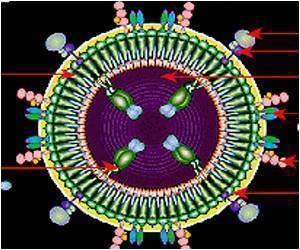HIV-positive transgender people are just as likely to take their medication, stay in care and have similar outcomes as other men and women living with the disease.

In the retrospective analysis, led by Baligh R. Yehia, MD, MPP, MSHP, a clinical instructor in the division of Infectious Diseases at Penn Medicine, researchers found that transgender people receiving care had similar rates of retention, antiretroviral therapy (ART) coverage and HIV suppression as nontransgender men and women over the 10 year period.
Dr. Yehia says there are several factors that could explain why care and suppression rates have improved and become more equal. "It's a combination of things: there have been great advances in HIV therapy and management over the last decade and increased attention from advocates and groups on identifying people infected with HIV quickly, linking them to care in a timely fashion, and starting treatment earlier," he says. "In addition, there is an increased focus on lesbian, gay, bisexual, and transgender (LGBT) health in general.
"Over the past five years, leading federal institutions and national organizations, including the Institute of Medicine, American Medical Association (AMA), and the American Association of Medical Colleges, have emphasized the importance of improving the health of LGBT populations by understanding and addressing their unique health care needs, identifying research gaps and opportunities, and developing educational activities to address the needs of LGBT trainees, faculty, staff, and patients."
For the study, Dr. Yehia and colleagues, including Kelly A. Gebo, MD, MPH, of the Johns Hopkins University School of Medicine, retrospectively looked at 36,845 patients from 13 clinics within the HIV Research Network, a consortium that cares for HIV-infected patients across the nation, from 2001 to 2011. Of the group, 285 self-identified as transgender.
Researchers found that transgender persons were retained in care, received ART, and achieved HIV suppression 80 percent, 76 percent, and 68 percent of the time during the 10 years, respectively. Similarly, men were 81 percent, 77 percent and 69 percent, while women were 81 percent, 73 percent, and 63 percent.
Advertisement
Little is known about the health outcomes of HIV-positive transgender people compared to other groups, but they are among the groups at the highest risk of the disease, with the highest percentages in blacks and Hispanics. In 2009, the Centers for Disease Control and Prevention reported newly-identified HIV infection rates of 2.9 percent for transgender persons compared to 0.9 percent for nontransgender males and 0.3 percent for females.
Advertisement
Patients can, however, safely receive ART and hormone therapy, notes Dr. Yehia, and that seeking care from providers familiar with both will help to ensure they have safe levels of the therapies.
"Many physicians don't feel comfortable taking care of transgender individuals because they are unfamiliar with their specific health needs and concerns," says Dr. Yehia, who also serves on the AMA LGBT advisory committee. "We have a come a long way, but more needs to be done. We need more education and research to help fill this knowledge gap and improve familiarity with transgender health issues."
Next steps are to identify the proportion of individuals not in care, and to work on getting them engaged.
Source-Eurekalert















